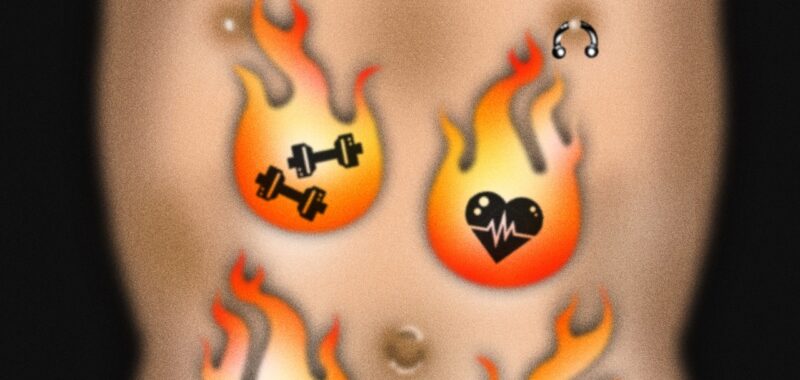“Basically, it’s the ratio of your waist-to-hip circumference,” says Dr. Kumar. “For a man, we don’t want it over one, meaning we don’t want the waist to have a larger circumference than the hips. Low health risk is 0.95 or lower. And then high health risk is one or higher.”
Other warning signs that you might be approaching dangerous levels of belly fat can include elevated blood sugar, low testosterone, or even snoring and trouble swallowing. “As you accumulate visceral fat, you’re probably slowly accumulating fat around other organs, like the esophagus and the trachea,” says Dr. Kumar.
How to burn off belly fat
The way we gain visceral fat is kind of like how you might rack up financial debt. Once your subcutaneous fat stores exceed their optimal level, excess calories begin getting stored as visceral fat, says Dr. Kumar. The main difference would be there’s no way to prioritize paying down your anatomical overdraft. But even though we can’t target visceral fat alone, there are a few things you can do to optimize your diet, workouts, and lifestyle so that you’re actively chipping away at it.
Prioritize Resistance Training and HIIT
A Harvard study that tracked the measurements of 10,500 American men over a 12-year period determined that weight training was more effective at reducing waistline size than any other activity, including moderate to vigorous aerobic training.
“When you strength train, two powerful things are happening,” says Luke Carlson, founder and CEO of Discover Strength. “The first is that you add lean muscle tissue to your body; the more lean muscle tissue you have, the more calories you’re burning at rest, which means you’re not storing those calories as fat on the abdomen. And the second is that when we do a tough strength training workout, we acutely burn five to nine percent more calories for the next three days.”
“What happens when you lift weights and increase your lean body mass is you become more sensitive to the hormone insulin,” explains Dr. Kumar. “Visceral fat is actually very insulin-resistant and comes along with a condition called insulin resistance. Building muscle treats insulin resistance, which reduces belly fat.”
While steady-state cardio has not proven to be particularly effective for burning visceral fat, high-intensity interval training (HIIT) running workouts have. Want to really kick things into high gear? Throw some strength exercises into an interval-based running workout.
Increase protein while decreasing overall calories
Carbs get villainized, but when it comes to fat loss it’s really all about creating an overall calorie deficit rather than reducing specific macronutrients. But even while taking in fewer calories than you’re burning, you’ll want to pay special attention to maintaining a high-protein intake, says Carlson, who recommends aiming for between 0.7 grams and one gram of protein per pound of body weight per day.
“You can lift all the weights in the world, but if you don’t have enough protein in your diet to support muscle growth, you’re going to fall short of your goal,” says Noelle McKenzie, CPT, cofounder of Leading Edge Personal Trainers. “It’s not just about losing weight. We can do that and lose a lot of muscle in the process too. It’s about how we can preserve lean muscle mass while losing fat.”

